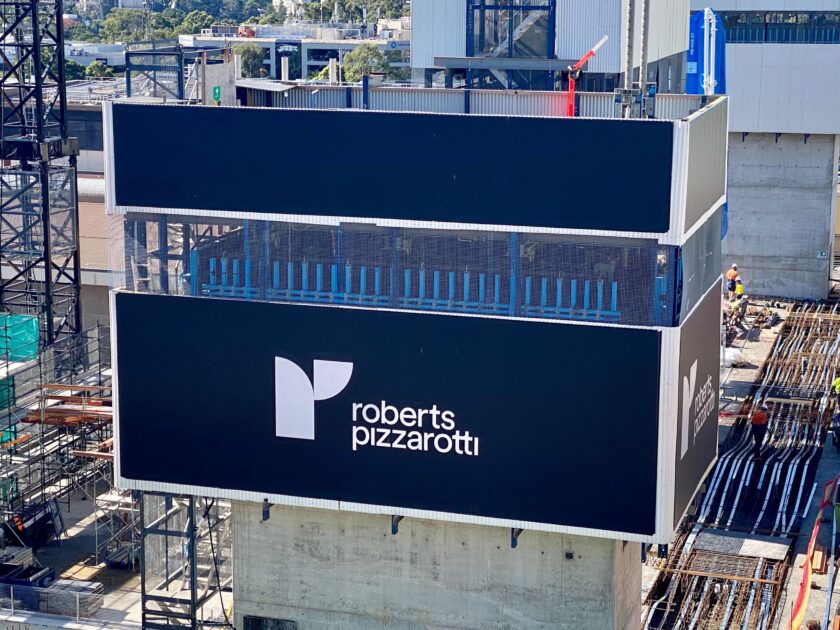Digital Signage Vs. Traditional Banners and Signs: Which is Best for My Event?
26 March 2020
4 mins read
Visual publicity has been a central element in branding, advertising and event promotion for centuries. The technologies, materials and expertise involved are continually growing and adapting to new market conditions. However, recent years have seen a new player come onto the scene: digital signage. In an age of screens, user-interactivity and short attention spans, signage solutions come in pixel-sized bites to stand out in an increasingly digital world. Particularly in the event signage space, digital signage has made waves.
Digital signage includes anything from the TV-screen menus at fast-food shops to billboards that engage with their surroundings or signs that users can interact with. Some memorable examples might be Nike’s 2012 ‘My Time is Now’ campaign, during which billboards responded to game highlights and tracked England’s progress in the Euro Cup; Lifetime’s 2015 New York subway billboards for ‘The Secret Life of Marilyn Monroe’ miniseries,’ which featured the lead actress’s skirt blowing up whenever a train flew by; Pepsi’s 2014 bus shelter revamp in London, where passengers were treated to an augmented reality surprise as they waited.
With digital signs providing such immersive, up-to-date and attention-grabbing experiences, is there any room left for traditional, static signs? When advertising for an event or brand, there are a few crucial elements to consider when designing a campaign. Cost, durability and impact are factors that will make-or-break a promotional campaign, so let’s see how digital signage stacks up against traditional signage.
Costs
Upfront
The initial price of traditional signage is much lower than going the digital route.
Operational
Operational and long-term costs are where the two even out. Digital signage these days is highly resistant to wind and weather and can be updated remotely with a few quick and easy steps.
Traditional signs require removal, re-printing or cleaning and re-installing every time they become too damaged to be visually attractive, or whenever you need to update the design. These costs can quickly rack up depending on the size of your campaign, and any spelling mistake becomes expensive.
Durability
Both traditional and digital signs are made from the most durable, weather-proof materials possible, but it remains true that paper-based signage is more vulnerable. However, if a digital sign becomes damaged, through vandalism or freak weather, for example, then replacing it becomes a massively costly enterprise.
Impact
Visual
A well designed and smart billboard will always stop people in their tracks – the first few times. The vibrant LED colours and ever-changing images of digital signage mean it remains new, relevant, and keeps standing out amongst the myriad of advertisements that surround us.
Customizability
A significant advantage of digital signage is how easily, quickly and cheaply the whole campaign can be updated and customised to real-time events, making sure it remains fresh and connected.
Interactivity
Another key factor in the value of digital signage is the opportunity it provides for a broad range of interactions. Traditional signage only creates one form of interaction: giving and receiving information. With digital signage, the relationship between viewer and sign is personalised, engaging and entertaining, generating experiences that translate into success for your brand or event.
Why Traditional Signage Will Always Play A Part In Your Event
When it comes to event signage, there’s one area in which digital signs will never out-do traditional ones: artistry and visual decoration. If you’re drawing attention to a specific location, a beautiful banner at the entrance is unbeatable. If you’re creating a particular ambience, static artwork creates a more permanent, immersive feeling. If you want relevant information to be available to your guests constantly, in a no-fuss, no-frills way that is accessible to all and sundry, there’s nothing like a static display.
Both types of event signage have their place in branding and promoting, and both are continually being pushed to new limits. Ultimately, it will depend on your budget, your target audience and your message.
Have a look at our extensive signage range for your next event here & get inspired by some of the event signage we have done here.





